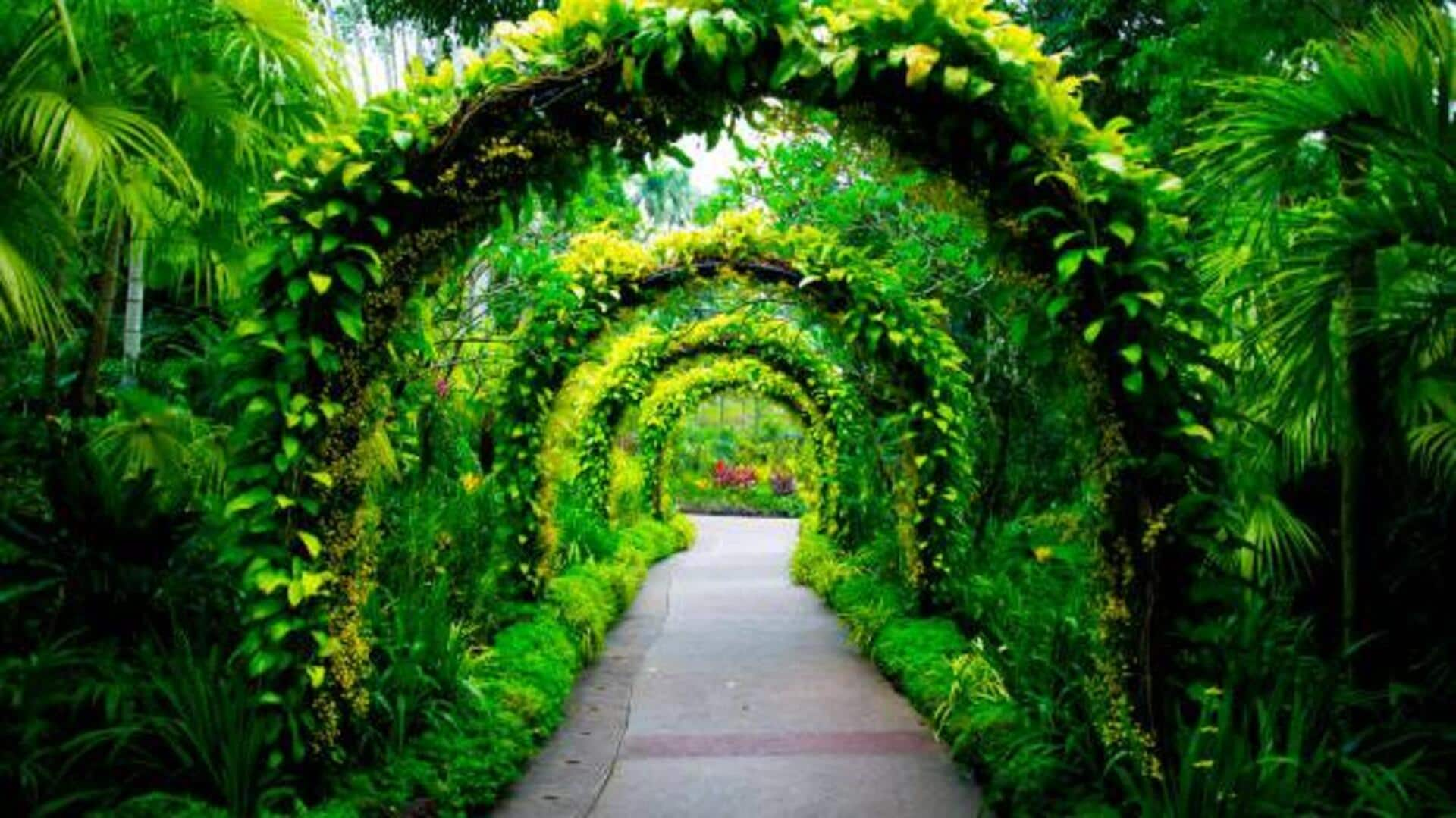
5 rare plants found in botanical gardens
What's the story
Botanical gardens across the globe are homes to the most unique and rarest of plant species. Not only do the gardens preserve biodiversity but also give us a peek into the mind-boggling world of flora. From towering trees to delicate flowers, every single garden has plants that are often endemic to a particular region. Let's take a look at some of the most intriguing plants found in global botanical gardens.
Aquatic marvel
The giant water lily
The giant water lily is an incredible aquatic plant famous for its massive floating leaves, which can grow up to two meters across. Usually found in South American botanical gardens, this plant flourishes in shallow water with plenty of sunlight. Its leaves are strong enough to support small animals, which makes it an amazing addition to any garden pond.
Unusual bloom
The corpse flower
The corpse flower is known for its gigantic size and its putrid smell of rotting flesh. Indigenous to the rainforests of Sumatra, it blooms rarely but attracts a lot of attention when it does. Botanical gardens hosting this plant tend to attract more visitors when it blooms due to its rarity and oddity.
Desert survivor
The dragon blood tree
Native to the Socotra archipelago, the dragon blood tree is easily recognizable by its umbrella-shaped canopy. It gets its name from the red sap which looks like dragon's blood when extracted. This tree has adapted well to arid environments, making it a great study for botanists interested in desert flora.
Ancient relic
The Welwitschia mirabilis
Welwitschia mirabilis is a one-of-a-kind gymnosperm native to Namibia and Angola's Namib Desert. Famous for its longevity—some are over 1,000 years old—it's characterized by the presence of only two leaves that keep growing throughout its life. This ancient plant offers a glimpse into how survival is possible under harsh conditions.
Iconic silhouette
The baobab tree
Known for their massive trunks and sparse branches that create a unique silhouette against the sky, baobab trees are iconic symbols of the African landscape. The remarkable trees have evolved to store water in their trunks during rainy seasons. It is this unique evolutionary adaptation that enables them to survive long droughts, an important survival trait considering the harsh climates of their native habitats.